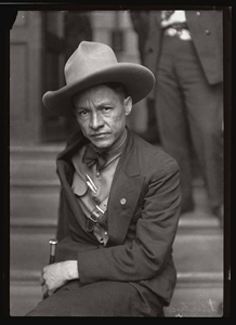Product Description
George Manupelli “AC Sandino” Silk screen poster c. 1970


GEORGE MANUPELLI (1931-2014) USA
“AC Sandino” Silk screen poster c. 1970
Silk-screen with black and red ink.
This stylized “Ben-Day dot” technique image of Augusto Cesar Sandino (AC Sandino (1895-1934) was a Nicaraguan revolutionary and guerrilla leader), the poster is float mounted in a white gold leaf edged frame.
Signed: george manupelli (in ink below image) and in pencil script below black inked printed name
Poster dimensions: H: 35″ x W: 23″
Framed dimensions: H: 41 1/2″ x W: 29 1/2″ x D: 2 1/2″
George Manupelli was born in Boston’s North End in 1931. A pioneer in experimental film since 1955, he has exhibited and won awards internationally including the 1964 Venice and 1965 Sao Paulo Biennials. He recently received and Avant- Garde Master Award for his Dr. Chicago films. He holds a Doctorate Degree from Columbia University (1959), and has taught at the University of Michigan, York University, was Dean of the San Francisco Art Institute, and was a Fellow at the University of Illinois Center for Advanced Studies. Manupelli founded the Ann Arbor Film Festival in 1963 and directed it for 17 years. He was also a member of the music theatre ONCE Group. His many films are in the archive of the Anthology Film Archives in New York City.
***This print is made from a 1930s photo of revolutionary Augusto Sandino.
George Manupelli “AC Sandino” Silk screen poster c. 1970
HECTOR GUIMARD (1867-1942) France
MAISON COILLIOT Lille, France
Tile c. 1898
Fired and glazed lava with abstract whiplash motifs in various tones of aqua blue on the obverse and a partial graphic on the reverse with polychrome floral and linear details.
Marks: 16 (on top of tile)
French architect Hector Guimard (1867-1942) realized the decorative possibilities of glazed lava, a substance made from mixing pulverized lava with clay when he built a villa for Louis Coillot, (1898-1900) a ceramics manufacturer in Lille who monopolized the distribution of the material. Guimard sided the entire facade of Maison Coilliot in lava stone.
***A related glazed lava tile from the Castel Henriette is in the Collection of the Musee d’Orsay.
The Maison Coilliot is an Art Nouveau house located on 14, rue de Fleurus in Lille, France. Louis Coilliot, a French ceramic entrepreneur, was fond of enameled lava and wanted to popularize the technique. To do so, Coilliot commissioned Hector Guimard, an architect he’d met at the 1897 fair La Céramique et tous les arts du feu, (“Ceramic Arts & Glass Making”), to apply the technique to his house’s façade. Coilliot’s factory and warehouse were located to the rear of his house, and therefore the façade held a double
purpose, both decorating the front of his home and advertising his business.
For more information see: Hector Guimard, 1867-1942: Architektur in Paris um 1900 (Munich: Museum Villa Stuck, 1975)
H: 25 1/2″ x W: 14″ x D: 9/16″
